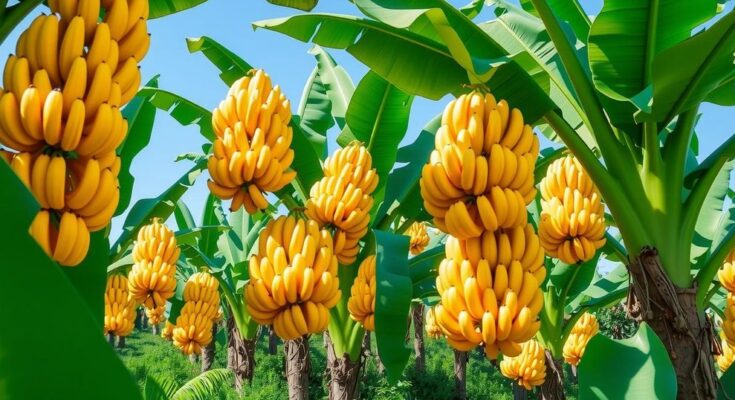Despite heavy rains in northern Peru, banana production in Piura is unaffected. The region accounts for 80-85% of national output, with coastal areas experiencing only light rainfall. Projections of increased March rains bring uncertainty, yet the agro-export sector remains watchful of potential impacts on production.
Heavy rains in northern Peru, especially in Tumbes and the highlands of Piura, have raised alarms within the agricultural sector. Nevertheless, banana production in the Piura region remains unscathed. This region accounts for approximately 80 to 85% of the nation’s banana output. Reports indicate that while highland areas experienced some crop damages due to intense rainfall, the coastal areas—home to most of the export-quality bananas and mangoes—saw only light and sporadic rainfall.
Despite projections suggesting a potential increase in rainfall in March, the precise effects on regional agriculture remain uncertain. In Tumbes, particularly near the equator, rainfall has been more severe, leading to significant crop losses and damage to critical road infrastructure. Conversely, Piura’s coastal producers remain optimistic, as recent rain alleviates the drought conditions that previously plagued the region.
During the months of October to December last year, the Piura region faced an extended drought, leading to hydric stress for the plantations due to limited water reserves. The recent rains, while helpful, have not caused alarm among agricultural stakeholders along the coast. The agro-export sector continues to monitor weather patterns closely to assess any potential impacts on production and export logistics for vital crops.
In conclusion, while northern Peru’s heavy rains have caused concerns in agriculture, banana production in Piura has demonstrated resilience. The coastal region, where most of the bananas are cultivated for export, has not been adversely affected, despite some challenges faced in higher altitude areas. As the situation develops, industry stakeholders remain vigilant in monitoring weather conditions to safeguard agricultural outputs.
Original Source: www.freshplaza.com




